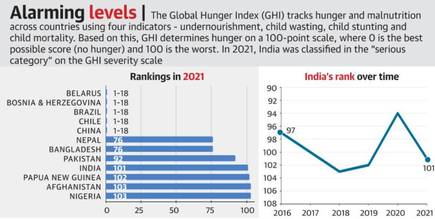7667766266
enquiry@shankarias.in
India’s low rank on the Global Hunger Index (GHI) calls for a relook and revision of the policies and interventions made in this regard.
India ranks 101 out of 116 countries for which reliable and comparable data exist.
India is also far below some of its neighbouring countries. Pakistan was placed at rank 92, Nepal and Bangladesh both at 76.

Four components
Sources of data
India’s wasting prevalence (17.3%) is one among the highest in the world.
Source: The Hindu